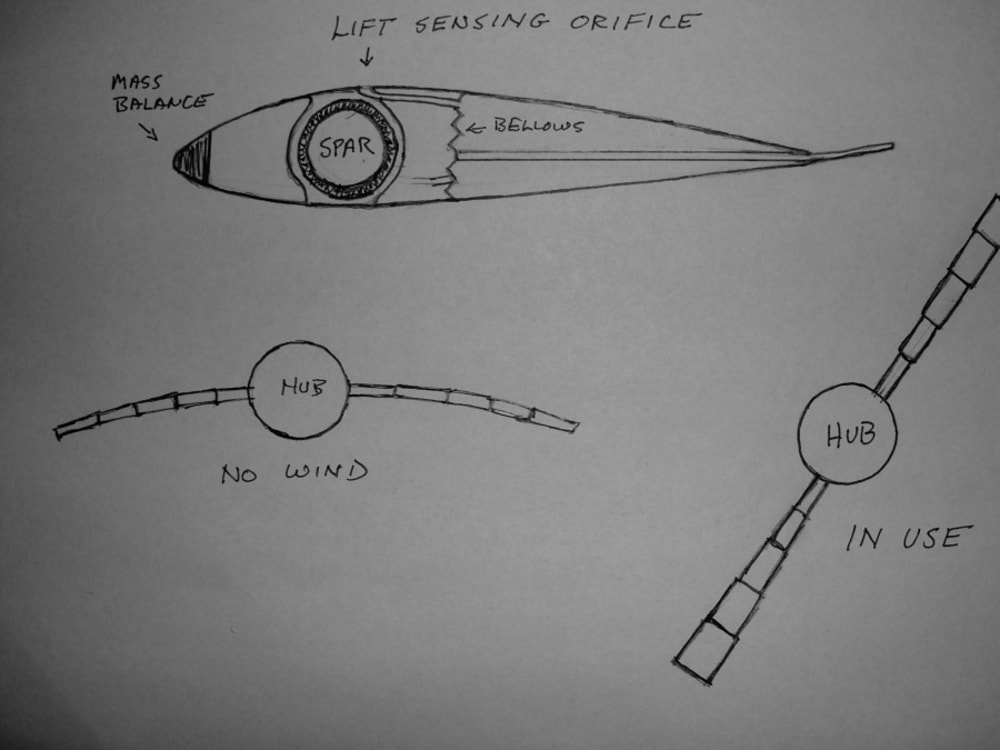Currently the use of inconstant power sources, such as wind turbines, is needlessly expensive and "hi-tech." Turbine blades resemble airliner wings, and the turbines require transmissions, electric generators (with imported rare earths), and fancy electronics, etc. for phase matching to the electrical grid. The electrical power so generated cannot be stored. Better is a system which uses well understood "19th century" technology suitable for less developed industrial countries. Potable water is a byproduct.
Using the example of a wind farm of horizontal axis turbines, the system consists of turbines with a novel blade design, to provide easily controlled torque and directly driven steam-cooled air compressors, similar to diesel engines. Insulated pipes direct the compressed air to a central storage tank. Use the compressed air directly, as was done with steam, to operate factories, vehicles, etc., and/or to drive an electric generator, using a piston "steam engine." That avoids several problems found with steam turbines. The steam cooling of the compressor is described in US Patent number 5,832,728. Water is injected into the intake air, and the output is "wet compressed air" (WCA), a mixture of air and steam. When the WCA is expanded, doing work, the exhaust is a mixture of air and condensed (distilled, potable) water, which may be recovered "for free." The process is thermodynamically efficient, as described in the patent. Experiments in Germany have shown that power can be transmitted from a 1200 hp diesel engine to the wheels of a locomotive more efficiently using isentropically compressed and expanded air than using an electric generator and motors. The storage tank provides for load leveling and storage of energy for windless days. A megaWatt-hr can be stored in a tank approximately the size of a railroad tank car (at 300 C), but bigger storage volumes (salt domes, cavities in rock, bladders under water, etc.) can be much less expensive than electrochemical batteries and will benefit from relatively lower loss of heat because of large volume to surface ratios.
The novel turbine blades are torsionally non-rigid. The blade consists of a tubular spar with airfoil sections which can rotate around it. The lift of each section can be sensed and used to control the angle of attack, as with trim tabs on the trailing edge. Thus the blade has a variable twist and never stalls at any rotational speed. It is easily controlled to prevent over-speeding, etc. In light winds, producing lower torque, the compressor can be operated with only one of several cylinders, increasing the displacement (more cylinders) as wind speeds increase.
Similar arrangements can be used with other inconstant power sources, such as tide machines or off-peak electricity.
Like this entry?
-
About the Entrant
- Name:Erik Buck
- Type of entry:individual
- Software used for this entry:none
- Patent status:patented

